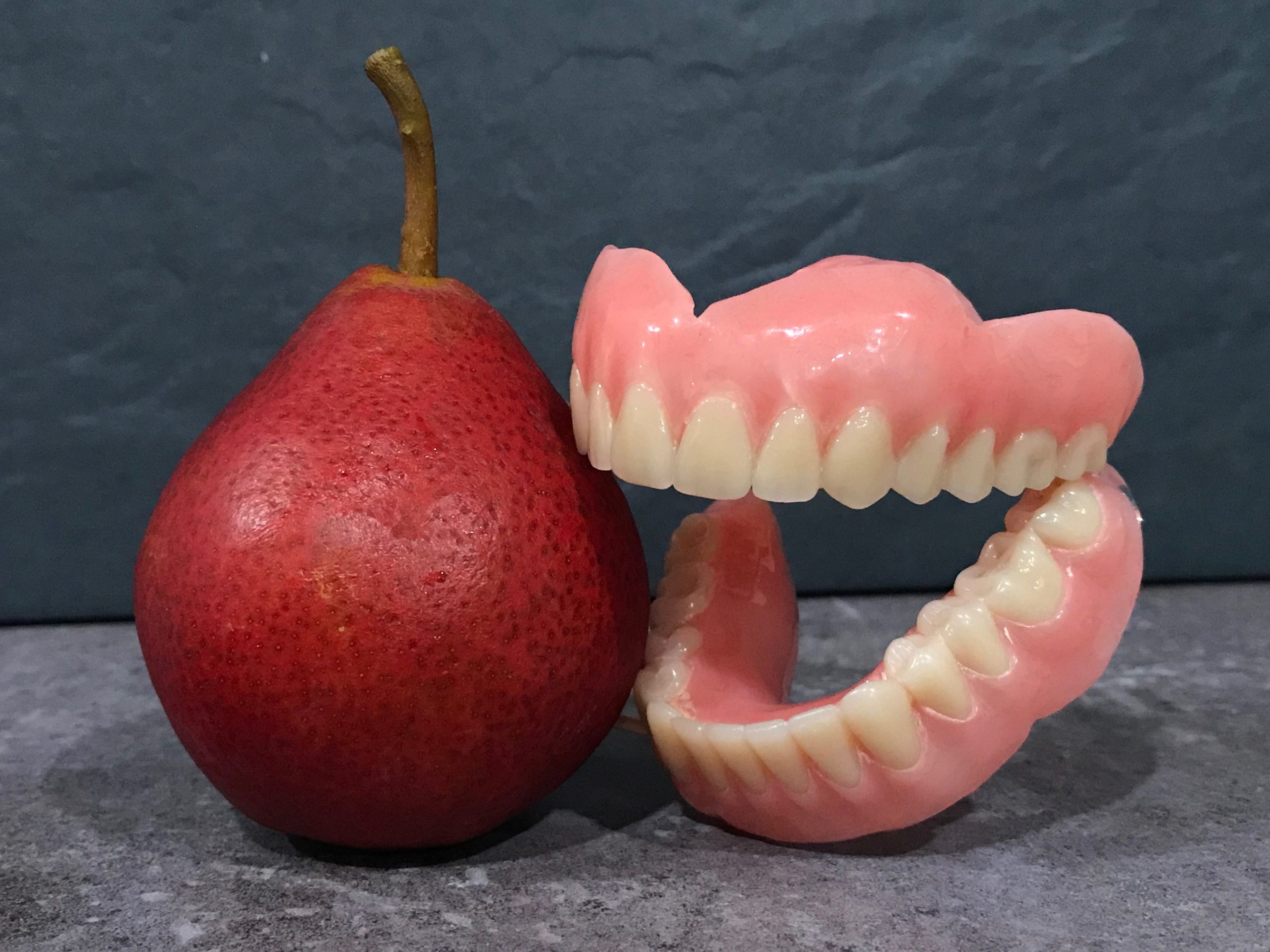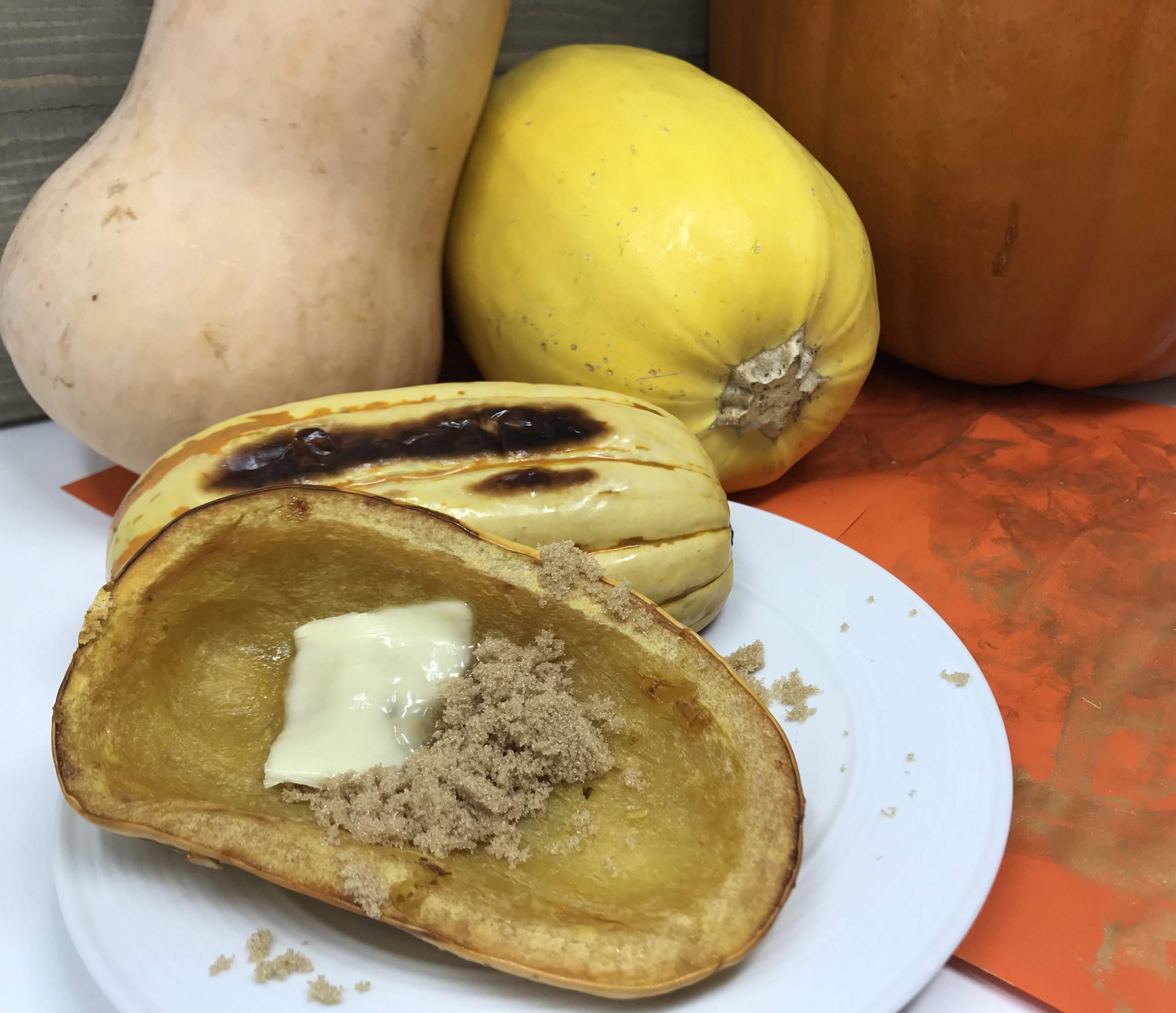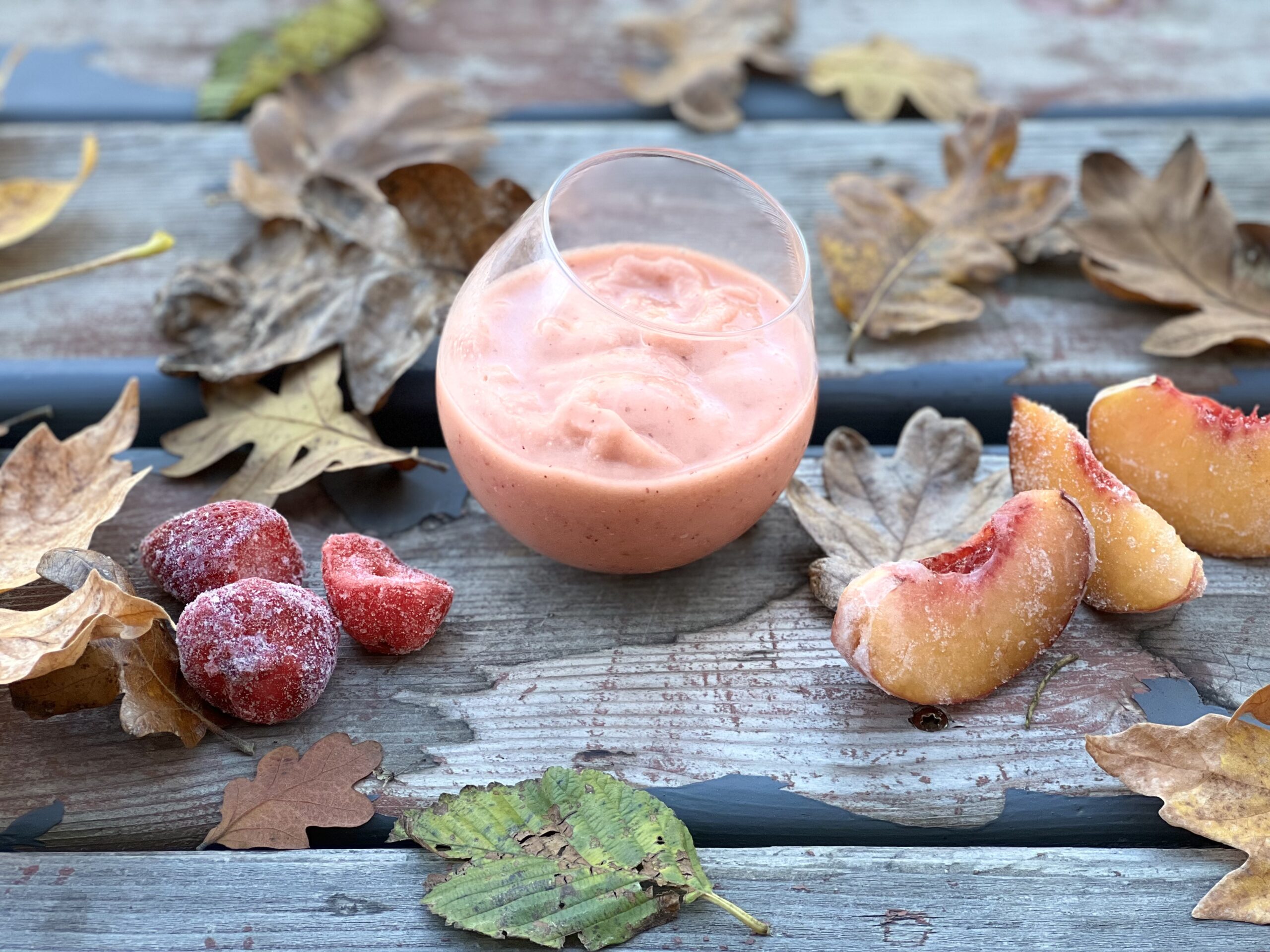Eating Resources For Those With Dental Treatments & Dental Conditions
Eating starts with chewing. Think of your head as the perfect chewing machine, one with many moving parts which must be in good working order to get the job done properly. Our teeth are set firmly into jaw bone, our maxilla and mandible. Nerves communicate with our chewing muscles to bring our upper and lower teeth together to cut and grind food. This movement is possible because the mandible is essentially a freely floating bone in our skull. It is connected to the rest of our skull through a specialized joint called the temporomandibular joint (TMJ). The TMJ is one of the most complex joints in the human body. Most joints can only move in a single plane, the TMJ can move in multiple planes, allowing muscles to move the mandible forwards, backwards, up, down, and side to side. Ligaments in the TMJ are like guard rails, guiding mandibular movements and preventing joint dislocation due to excessive movements in any one direction.
All these different body parts work together to make chewing possible. Any change or disruption to any of these integral parts can affect one’s ability to chew and eat food. Dental treatments and dental conditions can often be the source of a person’s eating difficulties. Easy-To-Chew recipes can be instrumental in making mealtimes enjoyable for those whose normal eating abilities have been affected by dental treatments and dental conditions.

-
Save
The Following Dental Situations Often Lead To Eating Difficulties :
Dentures are artificial tooth replacements for people missing some, or all of their teeth. According to the American College of Prosthodontists, “more than 36 million Americans do not have any teeth, and 120 million people in the U.S. are missing at least one tooth”. 90 percent of people with no teeth have dentures.
Eating with dentures is kind of like walking with a prosthetic leg, with practice it can partially restore function but only with patience and practice. Not all foods can be eaten with dentures; fresh fruits and vegetables and tough meats are particularly difficult to chew with dentures. One study showed that denture wearers were at greater risk of malnutrition than people who still have their teeth. Many denture patients complain that eating has become more of a chore than something they enjoy doing.
Here are three tips for learning to eat with denture:
1.Don’t give up, keep practicing and be patient
- Dentures are not teeth. They don’t feel exactly like teeth and they don’t function exactly like teeth. What worked for you when you had teeth may not work at all with dentures. As human beings, we generally aren’t that good at new things the first time we try them. The denture wearers who are successful with their dentures are the ones who consistently wear their dentures. Eating with dentures is a very unique skill, the more chewing you do with dentures in, the better you will become at it. Our brains are incredible accommodators, with enough practice it will feel more natural and you will become more efficient at breaking down food.
- Practice chewing with both sides of the denture at the same time
- The American Dental Association recommends starting out with soft, small cuts of food and putting half the food on the right side of the denture and the other half on the left side. Practice taking slow bites so that both sides of the denture are biting down on the food at the same time. By keeping pressure on both sides of the denture at the same time, the denture will tip less and it won’t dislodge as much during eating. Click here to see some other recommendations from the American Dental Association.
- Use Blenders, Food Processors, and Crock-Pots to make food easier to eat
- You can’t bite as hard, or chew as efficiently with dentures. Softer foods will be easier to manage. Yogurt gets old over time. You can increase the variety of foods you can eat by using blenders and food processors to break down foods into easier to manage pieces. Crock-pots are a great tool to make meals for yourself and whoever else is in your home. They can take difficult to chew cuts of meat and make them extremely soft and easy to digest. You will find that with the help of these kitchen gadgets, the culinary possibilities with dentures are limitless.
If you are having difficulties with your denture, talk with your dentist. A dentist can ensure that your dentures are properly fitting.
Teeth may need to be pulled for a number of different situations:
- Extensive cavities
- Severe gum disease
- Dental Abscess
- Baby teeth that fail to come out on their own
- To create space for crowded teeth
- Wisdom teeth (third molars) commonly do not have enough room available in the jaw to come in all the way. Wisdom teeth are often stuck all the way or partially in the bone (these are referred to as impacted wisdom teeth). Wisdom teeth that do not have room to come in properly can be prone to a severe gum infection called pericoronitis.
Pain and soreness can occur after dental extractions. It is also possible to have a sore jaw, and limited ability to open all the way. Soft foods can be helpful for the first week after dental extractions take place. Avoid spicy foods, as it can irritate the healing tissue. Anything with a lot of nuts and seeds would be best to avoid as they can easily get stuck in the healing socket. Ice cream and yogurt are great foods to get you through the most painful parts of recovery.
TMJ is a common term used to describe temporomandibular joint disorder (TMD). TMD is a blanket term that describes a number of different ailments that affects the temporomandibular joint.
The temperomandibular joint (TMJ) is the reason we are able to move our jaws. It is the movable connection between the skull and the lower jaw (the mandible). The temporomandibular joint is one of the most complex joints in the human body. Most joints can only move in a single plane, the TMJ can move in multiple planes, allowing muscles to move the mandible forwards, backwards, up, down, and side to side. The joint is cushioned by a small disc which sits between the skull and the mandible. This disc moves when the jaw is opened. The disc can sometimes move out of position, and can make a clicking or popping sound when it moves back into place. If the disc fails to move back into its proper position, the jaw can feel “locked” and jaw movement can be limited. This often corrects itself on its own with time, cold and warm compresses, use of an anti-inflammatory (like ibuprofen), and a soft food diet.
Dysfunction of the temporomandibular joint can lead to pain, limited jaw opening, and difficulty eating. If you are experiencing troubles with your TMJ, be sure to talk with your dentist about it. When your TMJ flares up, soft foods will be much easier and more enjoyable to eat. Pureeing your foods will put less strain the the jaw joint and will give your body a better chance to recover.
Braces are a dental treatment that is designed to move teeth into a more ideal position. Very few people naturally have straight teeth. For most of us the only way to get straighter teeth is to move them with orthodontic treatments. There are two popular ways to straighten teeth: 1) wire braces or 2) clear aligner therapy (like invisalign). Both accomplish their goals using the same concept: applying light forces to teeth over a period of time will cause the teeth to move.
Teeth are attached to your jaw bone by tiny periodontal ligament fibers. When forces are applied to teeth, the fibers are compressed on one side, and stretched on the other. Over time, the body will add bone where the fibers are stretched, and remove bone where the fibers are compressed. So when you have braces, your tooth’s “socket” literally moves through your jaw bone, carrying your tooth with it.
This process, while remarkable, does come with some drawbacks. Stretching your periodontal ligament over a period of time means your teeth will likely be sore during braces. The pain is worse when you get new wires or when you put in a new invisalign tray. Also, when your teeth are in the process of moving, they may not line up ideally for efficient chewing. Since your chewing efficiency will be decreased, try softer foods which require less chewing. Soft foods also put less force on sore tooth ligaments, and will not be as painful to eat. Pureed foods, eggs, fish, oatmeal, cream cheese, canned fruits, and yogurt are some foods that will be easier to eat with braces.
Canker sores, also known as aphthous ulcers, are small sores that can form in the soft tissues in the mouth. They can occur on the tongue, inside the cheek, the floor of the mouth, and in the back of the throat where the tonsils are. Canker sores are usually less than 0.5cm, but in some cases can be much larger.
The exact cause of canker sores is unknown, but some possible contributing factors are stress, trauma to the soft tissues in the mouth, hormonal changes, or certain foods or drinks (especially acidic ones). Canker sores will usually resolve on their own after two weeks. Rinsing with warm salt water and an over the counter topical anesthetic can help with pain in the mean time. Even so, those two weeks can be pretty painful, especially if the canker sores are located in an area that affects your ability to chew and swallow.
Try to eat soft foods, ones with mild flavors if possible. Spicy or acidic foods will be very painful to eat. Milk, yogurt, cottage cheese, soups will be less likely to irritate the sores. Ice cream and Popsicles can be very soothing treats as well. Pureed foods will be far easier to eat, as hard food textures tend to scrape against the sores.
Some Tips For Preparing Meals For Those With Chewing Difficulties Related To Dentistry:
- We chew food to make it small enough to swallow and digest. Dental problems can make it difficult (or at the very least, time consuming) to break down food enough to swallow comfortably. There is no greater tool to compensate for this than a blender or food processor. Both these tools are, in my opinion, mandatory to have if you have difficulty chewing. There is no easier way to mince, chop, blend, puree, or grind up food.
- Steaming, boiling, grilling, baking, and using the all powerful crockpot, are all cooking techniques that make hard foods softer and easier to chew. Foods which normally require heavy bite forces to eat, like carrots or apples, require very little bite force to eat if the proper cooking technique is used.
- Home cooked meals taste better.
- Cook three meals a day with healthy snacks in between meals.
- At each meal, half your plate should be fruits and vegetables
- Everyone’s eating situation is unique. Try to make sure that each meal is the proper texture/consistency for their unique situation.

-
Save
Easy-To-Chew is a food blog created by a dentist, a public health professional, and a registered dietitian. Their mission? To cook up delicious recipes dedicated to those who are in need of foods which are easy to chew, easy to swallow, and easy to love!
Recently Added Recipe
Some More Easy To Chew Recipes
Helpful Cooking Appliances When Cooking For Those With Chewing Difficulties
There is no finer way to puree foods than a Vitamix Blender. It can turn any food into a single, smooth texture which is easy to swallow.
-
Save
A food processor is a must have for finely chopping, slicing, and pureeing foods. It does all the work for you, which is especially helpful if your age or health status limits your ability to chop and slice foods by hand.

-
Save










